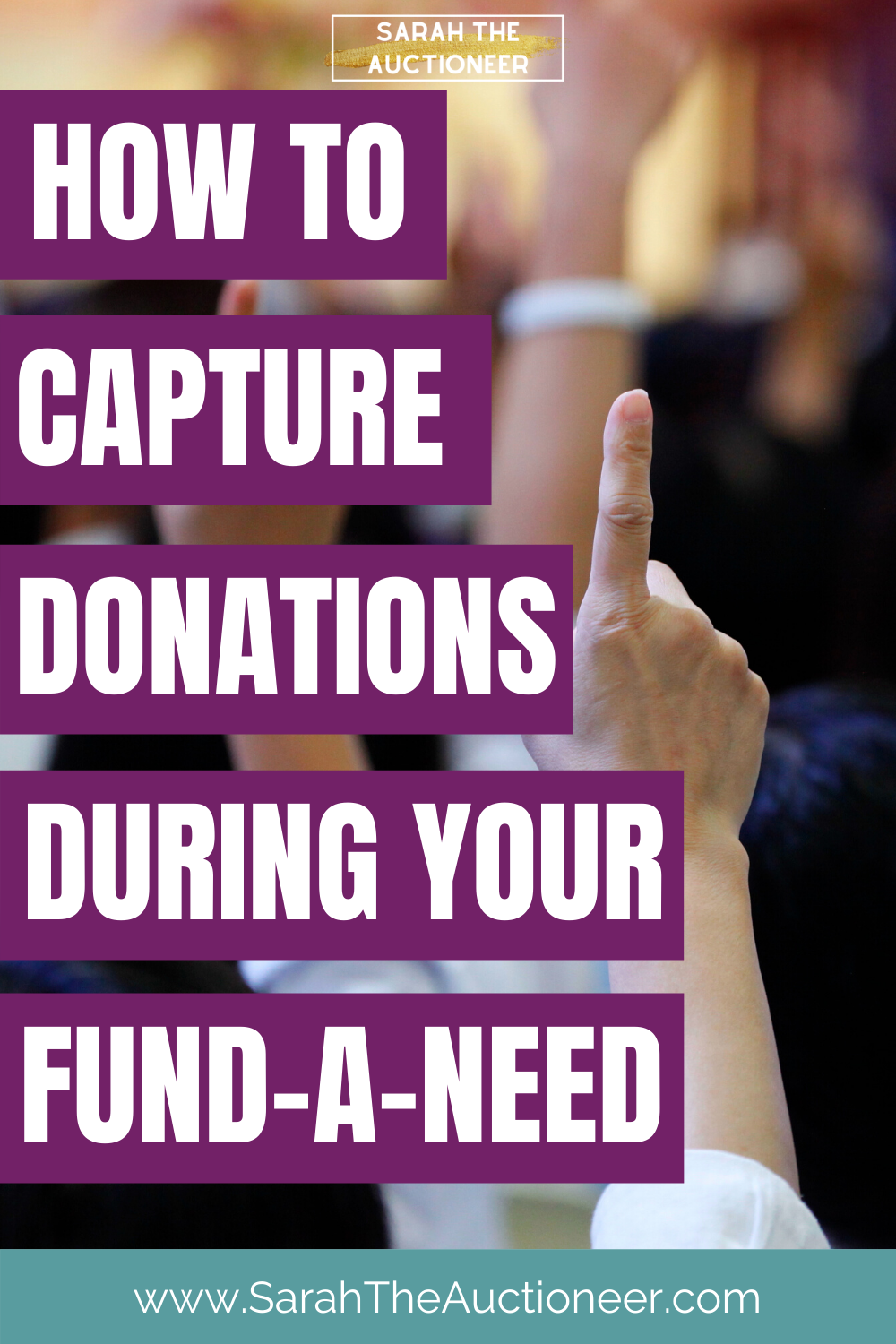So you’re planning a fundraising event to raise money for your nonprofit, and you want it to be amazing AND profitable, right? I want that for you so much too! A great event is one that guests love and want to keep attending year after year and that they want to GIVE to each time (and hopefully become donors outside the event).
There are a lot of things I’ve seen organizations do to “beef up” their event in hopes that they will make it more appealing to guests, or to draw guests to the event and end up losing money on their event. Not only because of the actual cost of these things, but also because of the distraction from the organization’s mission (which costs money in lost donations). While there is nothing wrong with spending money on these things for your event, I have seen these things take away more value (and revenue) from an event more often than I’ve seen them ADD to it.
Celebrity Emcees
Celebrity emcees are a popular addition to an event. I value the work of an emcee so much. They help keep the flow of an event and make transitions smooth and are a steady face throughout the night to keep guests engaged and make sure that everyone knows what is going on at all times.
That being said, paying a celebrity to “host” or “emcee” your event is not going to bring you more revenue, unless they have a close affiliation with your organization. I did an event recently with a couple of local radio hosts as the emcees, but they did not have a close affiliation with the organization. Their jokes did not land and there were a lot of awkward and uncomfortable moments through out the night. They became a distraction and took away from the momentum of the evening which is so important with fundraising.
Who are good options for Emcees?
Local Newscasters are AMAZING emcees. Yes, they are technically a “celebrity” but many of them will host events for free if they have an affiliation. What I’ve noticed about them is that they can follow a script well and they know the value of storytelling so they can tie anything back to the organization’s mission. I’ve never had an experience with an ungrateful newscaster, but I do notice them go under-appreciated for their time and talent at some events. If you can get a local news personality to host your event, allow them a guest and tickets to your event and don’t forget the thank you note!
Someone within your organization! This goes overlooked, but you probably have someone in your organization who is charismatic and energetic enough to host the event for you. Some of my BEST emcees have been staff or volunteers from the organizations. They know everyone who comes to the stage and are passionate about the work being done. They communicate your mission better than anyone.
While a “celebrity” emcee may get people into the room, they aren’t going to get the money out of their pockets and they may even distract from the mission.
Fancy Themes
Themes are a fun way to get people engaged in an event, but there is a fine line between engaging guests and distracting them. Fancy, overdone themes can not only distract from your organization’s mission, but I’ve seen nonprofits shell out big bucks on decor, entertainment and venues that made for a fun event, but did not bring any more revenue to the event.
Will fancy themes always lose you money? Of course not. We see huge organizations all the time that have themes and their events are incredibly profitable.
Here are some things to keep in mind when considering having a theme for your event:
Weigh the costs. Will the cost to execute the theme bring in more revenue or attract the right type of people? Can you offset the cost with a higher ticket price and create a more exclusive event that attracts a higher level of donor?
Consider creating a theme that reflects your mission! I work with a Wildcat Sanctuary that has themes each year that reflect their Fund-A-Need for the year. One year the theme was a white party where everyone wore white and then during the Fund-A-Need we raised money to rescue some White Tigers from an abusive situation. Instead of being a distraction, the whole theme reminded people WHY we were there. These are the types of themes that work really well.
How well do your guests know your organization? If you have a lot of devoted donors attending your event, a theme may be a fun way to unite them. However, if you have a primarily newer group of people, I recommend hosting events that focus on your mission and the demographic you serve. People should walk away from your event connected to YOU!
Hired Keynote Speakers
Keynote speakers can draw a certain crowd, but think through all of the details before hiring a keynote speaker. I’ve seen some do a wonderful job, but more often than not, there are problems with Hiring a Keynote speaker. Here are the most common problems I see Keynote Speakers adding to events:
They talk too long. During a fundraising program, you have to keep the night moving along so people don’t get bored. Most keynote speakers have talks that are 45-60 minutes. The nonprofit will tell them they have 20 minutes, and the Keynote speaker will either say “that’s fine” or they’ll say they can’t do it in 20 minutes and either way, they are almost always going to talk longer than they have budgeted. Remember at a fundraiser, time is money. As you start to lose attention, you will also lose revenue.
They plug their own mission instead of YOUR mission. While it is so easy to find a Keynote speaker that represents they type of work that you do, I have rarely seen a speaker come in and be able to accurately promote an organization’s mission. They talk about their own experience and their own work, and rarely do a good job of tying it back into the organization that hired them. This distracts from the mission. I’ve even see keynote speakers plug their own nonprofits at events which makes it very challenging to go and raise money for THIS organization after they spent 30-45 minutes talking about something different.
They are expensive. Keynote speakers get paid to speak, and they do not come cheap. They will likely run your organization $10K-20K+ to hire a professional, desirable speaker.
Who should speak instead?
My recommendation is to have someone internally talk about the organization. Maybe it is the Executive Director, or a staff member. Try having a testimonial from someone your organization served. Or, instead of spending money on a keynote speaker, hire a professional videography company to come in and make a stellar video that tells your organization’s story. It will be engaging to the audience and it will also be an asset you can use on your website and will bring you much more revenue.
Entertainment
Are you seeing a theme here? Anything that will distract from your mission, is going to lose you money. Entertainment is not bad, but you need to ask “will this bring us more revenue?” I am all for entertainment during the cocktail hour or after the fundraising is accomplished, but the entertainment you hire should not take up the prime time in your program.
Your live program should be very strategic in leading up to your Fund-A-Need in order to build momentum and bring in the most revenue for your organization. Hiring entertainment for the sake of entertaining your guests, can risk distracting from your purpose for the evening. Now, if you have music or some other performing arts as a part of your mission, your whole program will probably be entertainment which is perfect because it continues to bring the audience back to your mission.
Open Bar
Does this one surprise you? There is an idea that people have that if their guests have a couple cocktails, they will loosen their purse strings a bit. While, this may be true (though there is no hard evidence to support it), there is a fine line between a couple cocktails to loosen up the crowd, and losing them all together.
Hosting an open bar all night is not only going to cost you a ton of money, but you are risk a crowd that becomes chatty and distracted when you need them to be alert and engaged for fundraising.
What can you do instead?
Try hosting an open bar during the cocktail hour
If you want to treat your guests to a few free drinks, host an open bar for an hour or 90 minutes at the beginning of the evening. This will give them some time to loosen up and enjoy themselves before the big program starts.
Incentivize people to come early with free drink tickets
A client of mine just did this over the weekend. They found that their group used to parade in to their event late, which impacted giving during the silent auction, so they promised that if people arrived between 5-6 (in the first hour of registration), they would get 2 free drink tickets. This got people in the door early and they could use those free drink tickets at any point in the night.
Have wine served at the tables at dinner
This is a great option to give people a drink during the program. It’s not expected, but always appreciated by guests.
What is the common theme?
Before you spend money on anything at your event, ask yourself, “Will this distract from our mission or remind our guests of our mission?”
In and of themselves, none of these things are bad, but more often than not I’ve seen them create more harm than good for my clients. My goal for you and all of my clients is to be as profitable as possible while educating as many guests as possible so they can begin to build life long donor relationships. My fundraising strategy is very mission-focused, which leads to record-breaking events.
If you want help with emphasizing your mission, I recommend checking out my Free Fund-A-Need Framework below. This will help you tell your organization’s story throughout the night at your fundraising event and turn more guests into donors.




















